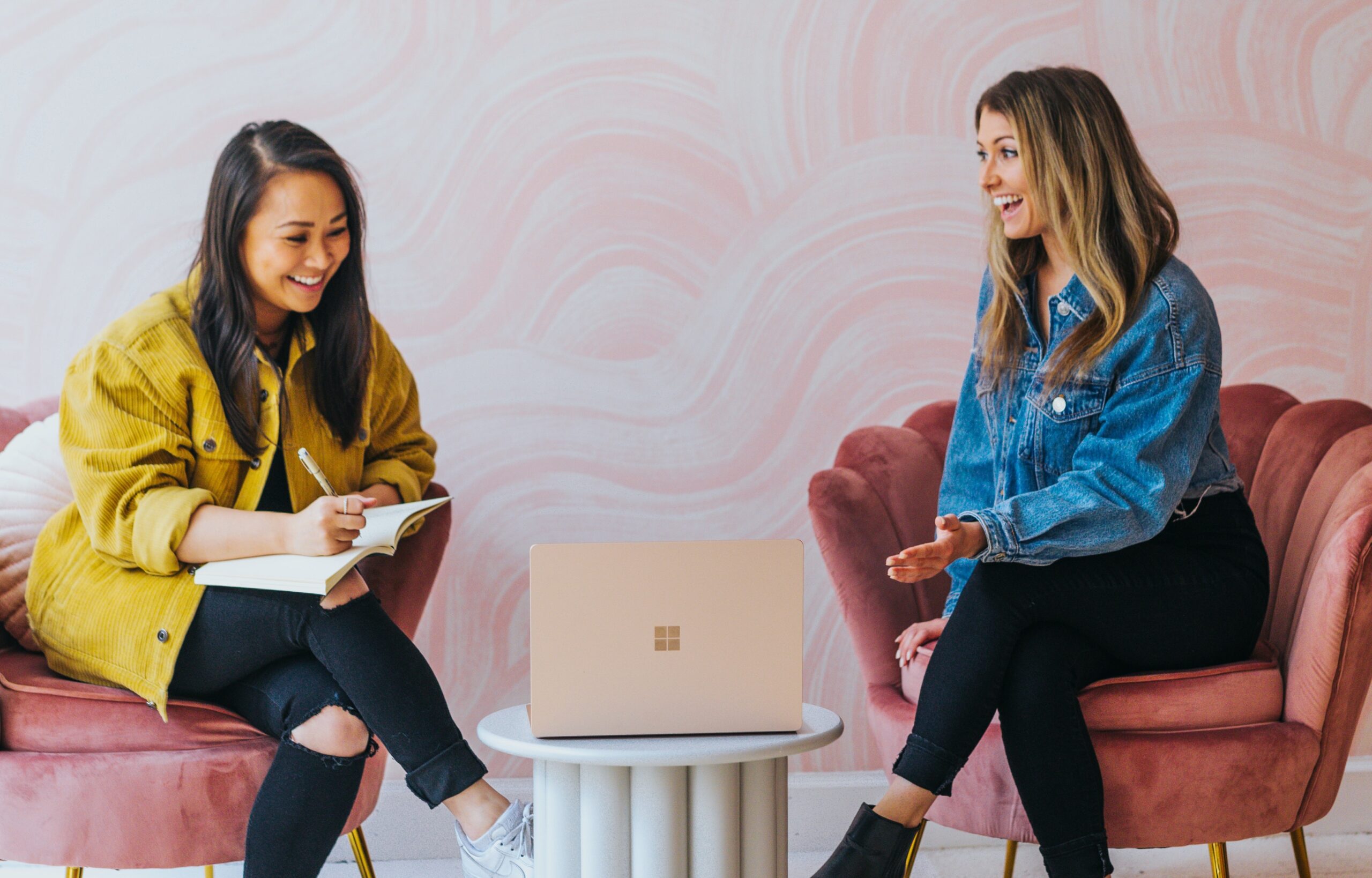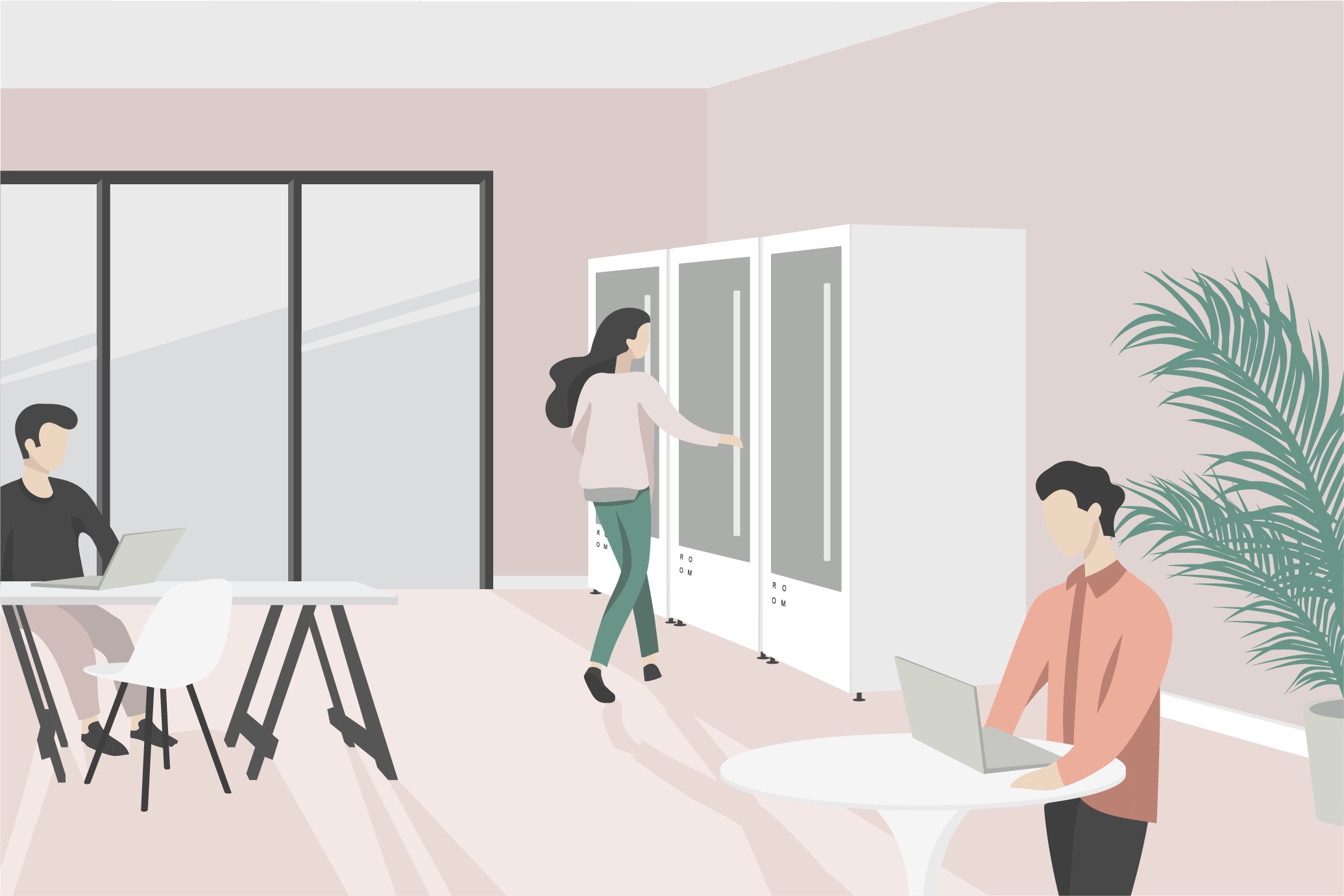The rules of engagement at the office have changed. Here’s how to handle the shift.
You’ve perfected the Zoom happy hour, binged too much Netflix, and you no longer remember how to shower or converse outside of Slack emoticons. Soon, you’ll step back into the office, and be forced to look presentable from the waist down, hold an in-person conversation and maybe even look people in the eye.
But how do you behave when the rules of social engagement at work have changed? Gone are the formal handshakes, the chit chat at the water cooler about vacation plans, the team lunches, and the 5 p.m. happy hours. Instead, you may be greeted at work by temperature screenings, one-person elevator rides and rows of plexiglass dividers, masks, and sanitizing equipment.
Work will look and feel different, but we’ll be different too. The way someone felt and behaved pre-COVID may be totally different today, especially if that person has experienced trauma or loss. The pandemic, social distancing and lockdown have dramatically impacted our social lives, complicating social connections, friendships, dating and work relationships.
People may have lost loved ones or suffered illness, they may worry about pay cuts and the economic pressures or they may struggle with anxiety and depression due to intense isolation. No one knows how exactly the lockdown will change people, but the mental health consequences will certainly linger, says Dr. Navya Singh, an adjunct professor at Columbia University’s Department of Psychiatry, and founder of wayForward, an online platform for mental health services.
“People’s reactions going back to the office will vary, so we need to be coaching people to lead with respect and kindness,” says Val Yaw, president of Shift, an Aspen-based workplace analytics firm. That means understanding that some people may be more vulnerable and tenuous than you may be, based on their COVID experience, and to anticipate the shifting needs of colleagues and customers.
Differing views on work
The office might seem like a jailbreak if you were stuck inside an urban apartment with your goldfish or if you went cross-eyed from juggling work and homeschooling. But if you’re more at risk or suffered a tragedy during quarantine, the office and nearby colleagues might prompt anxiety.
We may not be the same kind of workers we were pre-COVID, following months of working from home in the comfort of our own spaces. Now, people must shift back to a shared work environment. Extroverts will rejoice, while introverts may cling to their privacy. “We have to trust that everyone is doing the best that they can,” says Yaw.
Now more than ever, the rules of social engagement are unclear with mixed messages globally and nationally. Mavericks of the world may let their mask hang around their necks, they may talk too loud, joke too much, and step too close to others, irritating fellow colleagues. Meanwhile, their more anxious coworker may be more conservative, wielding hand sanitizer in their pocket and insist on communicating through email. Everyone will have unique motivating needs and drivers, based on the lens from which they experienced the pandemic.
Embrace self awareness
In both cases, workers must be acutely aware of how they themselves act and what others need to feel comfortable. Yaw advises people to be aware of your personal communication style and read the room: If you talk too much, it may not resonate with someone who is confused and reserved and afraid to lose their job, says Yaw. Pay attention to how others are responding, what’s triggering them and why, and learn to adapt to this constantly shifting target of how we interact.
Yet there is an enormous disparity between what we think we’re doing and how we are actually received and observed by others. A study published in the Harvard Business Review, for instance found that 95% of those surveyed said they believed they were self aware. Yet just 15% of their colleagues agreed. “Be vulnerable. Be curious, and ask what’s appropriate,” Yaw says.
Employers should be prompting workers to take a moment to reflect on their feelings as discussion of returning to the office emerges. Surveys are a good way to take the pulse of a team and address and prepare for those emotional mindsets when heading back to the workplace. Robin, a scheduling and workplace management company, offers a model of a comprehensive COVID workplace survey, while Utah-based Qualtrics is hosting customizable templates for check-ins with remote workers during their time away from the office.
Leaders should clearly communicate a plan to workers about office expectations and social etiquette ahead of time, and offer resources on handling that colleague who stands too close or might be coughing. Empower employees to make informed decisions by openly communicating, and celebrating positive behaviors and discouraging negative ones. Be transparent even when it’s uncomfortable, and assume that people will act with positive intent and acknowledge the unique anxieties of the current moment.
“This is an entirely new playbook for employers when dealing with people who are scared, physically, emotionally and financially,” says Connie Hubbell, a Boston-based strategic advisor on employee communications and crisis management.
Hubbell recommends an anonymous feedback system that allows employees to speak up if a colleague isn’t washing their hands or isn’t wearing a mask properly. It will show what’s working and what’s not working and potentially alleviate tensions, says Hubbell.
Employers should also plan for potential challenges, such as the emotional reactions by employees or what to do if someone gets ill with COVID and the office must immediately pivot back to remote working. “It’s critical that we talk about this and prepare,” Singh says.
Rebuilding social norms
While many people are happy working from home, most office workers miss the unstructured socialization that was always a core part of work, says Chris Yeh, who co-authored The Alliance: Managing Talent in the Networked Age with LinkedIn founder Reid Hoffman. Relationships blossomed in serendipitous physical interactions, whether it was people running into each other in the kitchen, in a hallway, on a communal couch or around a happy hour drink. People got to really know each other over luncheons, fundraisers and dinners, all of which will now be few and far between.
That kind of relationship building brings real value to an office, through better collaboration, communication and cross-functional team building. Yet social distancing will challenge camaraderie and connection. Teams have learned to stay connected online, but an hour long Zoom social with 12 people is vastly different than catching up with co-workers in the morning over coffee. Yeh says the same kind of tactics that helped us adapt to an online social life will show up in the real world. Perhaps instead of large Zoom calls, leaders could set up chairs, six feet apart, where people can get together safely. “The architecture of the offices will change,” he says.
Employees will see they need to be much more intentional about workplace interactions, and engineering casual collisions that happened between employees in those places. The watercooler or lunchroom conversation may be replaced with conversations in a spacious lobby or outdoors. Employers might consider investing in picnic tables, umbrellas and glare screens for computers so people can spend more time outside. Meetings will still be called, but they won’t happen in small offices or behind closed doors, but rather in space where people can stay six feet apart, says Hubbell.
In the end, the pandemic may actually drive better work relationships. It’s made people more vulnerable, and that’s good because it can lead to stronger relationships. When there’s trust, there are ideas and better collaboration.
“I think teams will be a lot closer when they’re able to move back into the workplace,” says New York City workplace connection consultant Lakshmi Rengarajan.
For starters, we don’t have to probe very hard to find commonality. Whether we talk about it directly or indirectly, there is a true shared experience that’s very tangible. Says Rengarajan: “Literally every person you encounter has in some way had to navigate a pandemic that will hopefully make us a little more curious about each other.”
Those face-to-face interactions and seeing your coworkers each day won’t be taken for granted. People may actually walk around and visit each other in person, rather than messaging each other from across the room. Meetings may also become more intentional with the deliberate purpose of ensuring efficiency and perhaps getting to know others in a deeper way.
COVID may shut down the cafeteria and squelch celebratory group hugs, but employees will eventually find new ways to connect in person in ways that don’t rely on hugs and conversations about our overscheduled lives, and employers need to carve out the path to get there. If leaders set their teams up for success before they set foot back in the office, and prepare them and lead with compassion, then trust will take root in the post-COVID workplace. If there is trust in your team, trust in your business to do the right thing, you’ll find loyalty, and, ultimately, a better way to work—and socialize.


